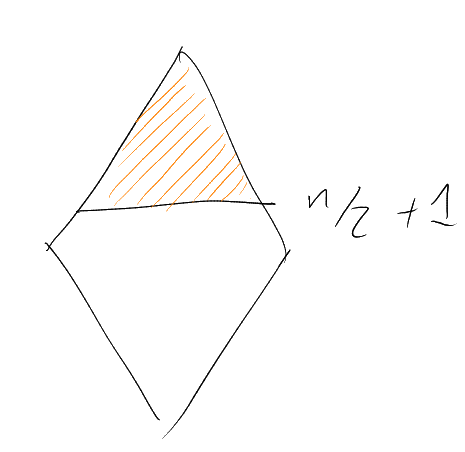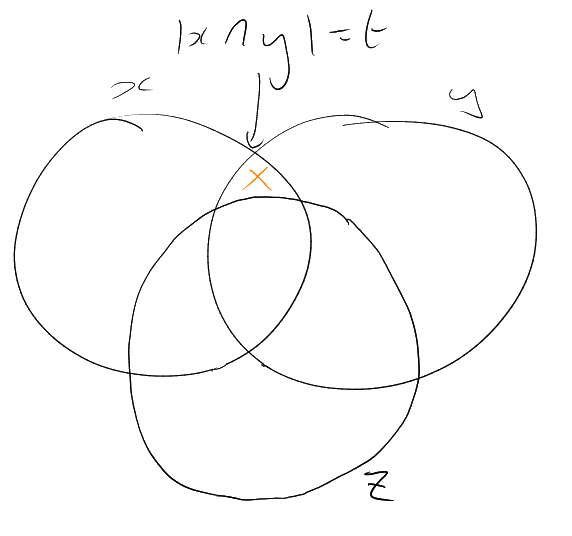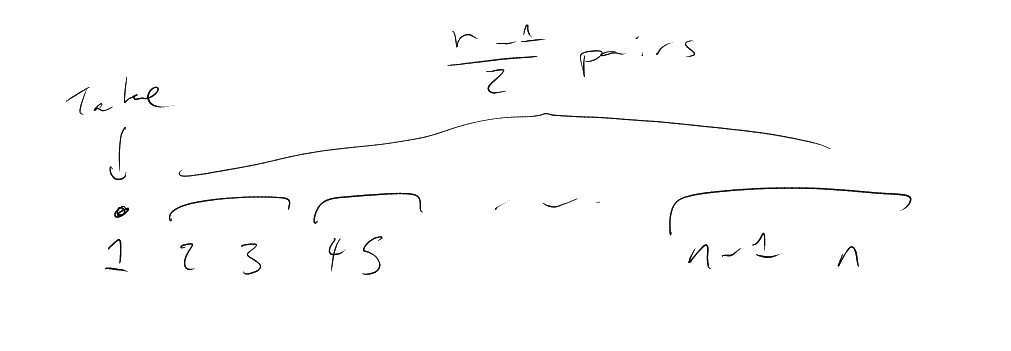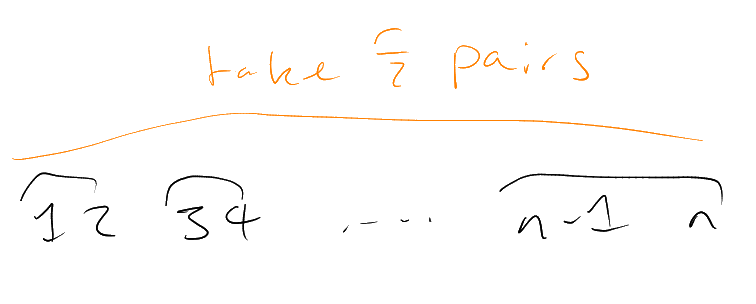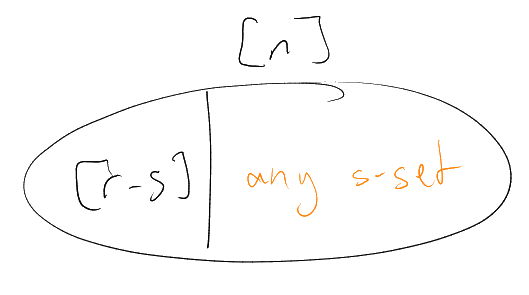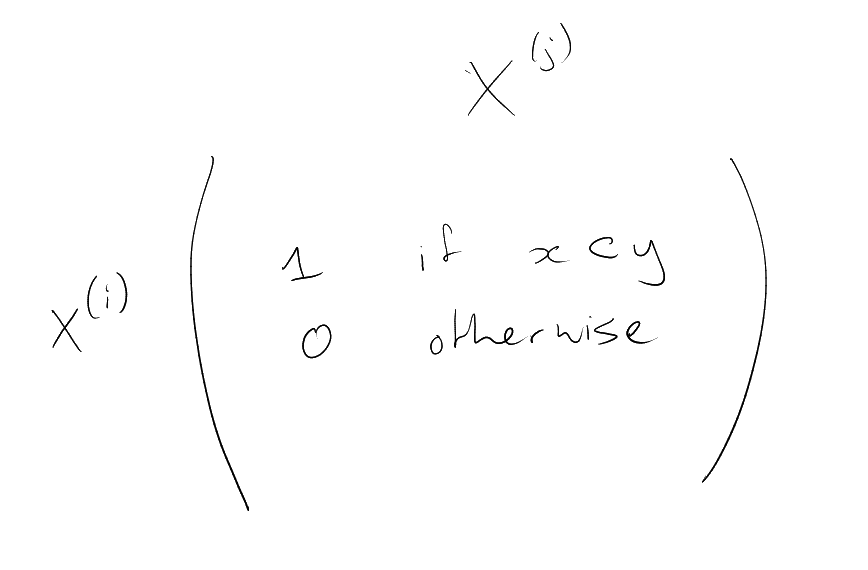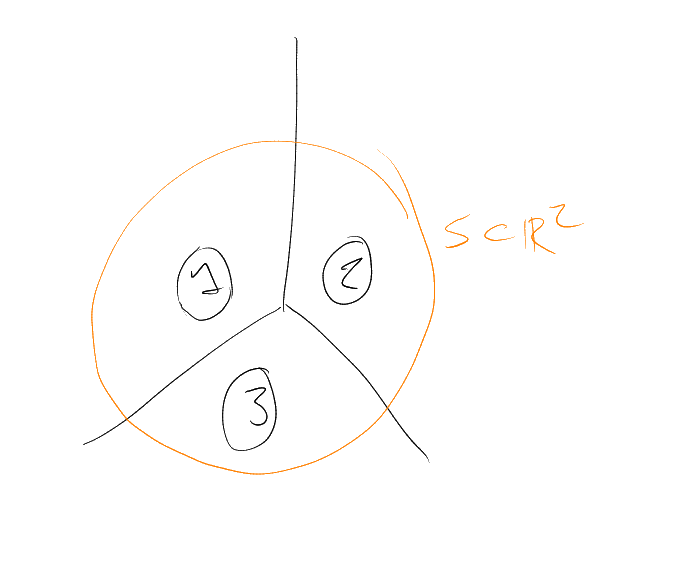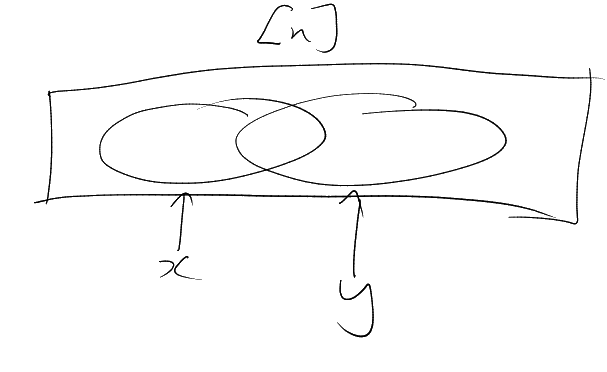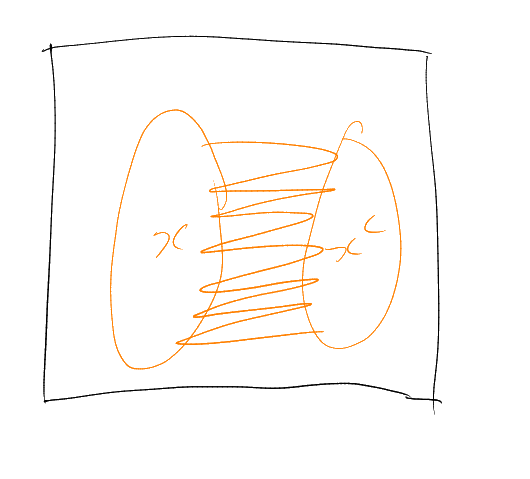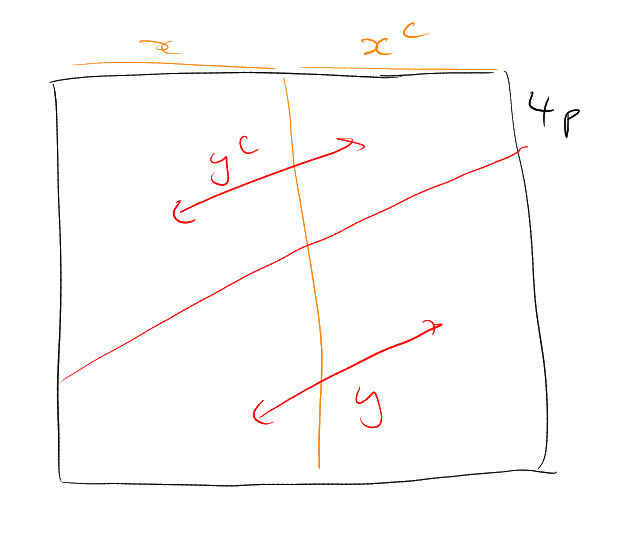3 Intersecting Families
3.1 -intersecting
families
is called
-intersecting
if for all
.
How large can a -intersecting
family be?
Example.
.
Could take
– has size .
Or – has
size .
Theorem 1 (Katona’s -intersecting Theorem).
Assuming that:
Then .
Proof.
For any :
have ,
so .
So, writing
for ,
have
– i.e.
disjoint from .
Suppose that .
Then, by Harper’s Theorem, we have
|
|
But
disjoint from ,
which has size
contradicting .
□
What about -intersecting
?
Might guess: best is .
Could also try ,
for .
Example.
For -intersecting
in:
-
:
,
,
.
-
:
,
,
.
-
:
,
,
.
Note that grows
quadratically,
linearly, and
constant – so
largest of these for
large.
Theorem 2.
Assuming that:
Then for sufficiently
large, we have .
Remark.
-
(1)
Bound we get on
would be
(crude) or
(careful).
-
(2)
Often called the “second Erdős-Ko-Rado Theorem”.
Idea of proof: “
has
degrees of freedom”.
Proof.
Extending
to a maximal -intersecting
family, we must have some
with
(if not, then by maximality have that ,
,
,
have
– whence ,
contradiction).
May assume that there exists
with –
otherwise all
have .
Whence .
So each
must meet
in
points. Thus
|
|
Note that the right hand side is a polynomial of degree
– so eventually
beaten by .
□
3.2 Modular Intersections
For intersecting families, we ban .
What if we banned ?
Example.
Want
with
odd for all distinct ?
Try odd: can
achieve ,
by picture.
What if, still for
odd, had even
for all distinct ?
Can achieve ,
by picture.
This is only linear in .
Can we improve this?
Similarly if
even: For
even for all ,
can achieve
– picture
But for odd for
all (distinct):
can achieve
(as above). Can we improve this?
Seems to be that banning forces the
family to be very small (polynomial in ,
in fact a linear polynomial).
Remarkably, cannot beat linear.
Proposition 3.
Assuming that:
Then .
Idea: Find
linearly independent vectors in a vector space of dimension
, namely
.
Proof.
View
as ,
the -dimensional
space over
(the field of order ).
By identifying
with ,
its characteristic sequence (e.g.
for ).
We have
for each ,
as
is odd (
is the usual dot-product).
Also,
for distinct
(as
even).
Hence the ,
are linearly independent (if ,
dot with
to get ).
□
Remark.
Hence also if ,
even, with
odd for
all distinct ,
then – just
add to each
and apply
Proposition 3 with .
Does this modulo
behaviour generalise?
Now show:
allowed values for
modulo implies
polynomial
of degree .
Theorem 4 (Frankl-Wilson Theorem).
Assuming that:
Then .
Remark.
-
(1)
This bound is a polynomial in
(as
vares)!
-
(2)
Bound is essentially best possible: can achieve
(see
picture).
-
(3)
Do need no .
Indeed, if
() then can
have with
(not a polynomial
in , as we can
choose any )
and all .
Idea: Try to find
linearly independent points in a vector space of dimension
, by somehow “applying
the polynomial
to ”.
Proof.
For each ,
let be the
matrix, with
rows indexed by ,
columns indexed by ,
with
|
|
for each ,
.
Let be the vector
space (over ) spanned
by the rows of .
So .
For , consider
(note each row
belongs to , as we
premultiplied by
a matrix). For ,
:
So
|
|
so all rows of
belong to .
Let (note each
row is in ).
For ,
have
Write the integer polynomial
as , with
– possible
because .
Let (each
row is in ).
Then for all :
|
|
So the submatrix of
spanned by the rows and columns corresponding to the elements of
is
|
|
Hence the rows of
corresponding to are
linearly independent over ,
so also over ,
so also over ,
so also over .
So .
□
Remark.
Do need prime.
Grolmusz constructed, for each ,
a value of and a
family such that
for all distinct
we have with
. This is not a
polynomial in .
Corollary 5.
Assuming that:
Then .
Two -sets in
typically meet
in about points
– but exactly
equaling is
very unlikely. But remarkably:
Corollary 6.
Assuming that:
Then .
Note.
is a tiny (exponentially
small) proportion of .
Indeed, (for
some )
whereas .
Proof.
Halving
if necessary, may assume that no
(any ).
Then
distinct implies ,
so .
So
by Corollary 5. □
3.3 Borsuk’s Conjecture
Let be a bounded
subset of .
How few pieces can we break
into such that each piece has smaller diameter than that of
?
The example of a regular simplex in
( points, all at
distance ) shows
that we may need
pieces.
Conjecture (Borsuk’s conjecture (1920s)).
pieces always sufficient.
Known for . Also known
for a smooth convex
body in or a symmetric
convex body in
(convex means
implies ).
However, Borsuk is massively false:
Theorem 7 (Kahn, Kalai 1995).
Assuming that:
Then there exists bounded
such that to break into pieces
of smaller diameter we need ,
for some constant
(not depending on ).
Note.
-
(1)
Our proof will show Borsuk’s conjecture (1920s) is false for .
-
(2)
We’ll prove it for
of the form ,
where
is prime. Then done for all
(with a different ,
e.g. because there exists a prime
with ).
Proof.
We’ll find
– in fact
for some .
We have already had two genuine ideas from this sentence: first that we think about having ,
and second that we go for .
Have ,
so :
|
|
So seek with
diameter , but
every subset of
with is
very small (hence we will need many pieces).
Identify with the
edge-set of , the
complete graph on
points.
For each let
be the complete bipartite
graph, with vertex classes .
Let . So
, and
.
Now
where .
This is minimised when ,
i.e. when .
Now let have smaller
diameter than that of :
say . So must
have distinct:
(else diameter
of is the
diameter of ).
Thus
Conclusion: the number of pieces needed is
(for some ).
This is , for
some , which
is at least
for some .
□
˙
